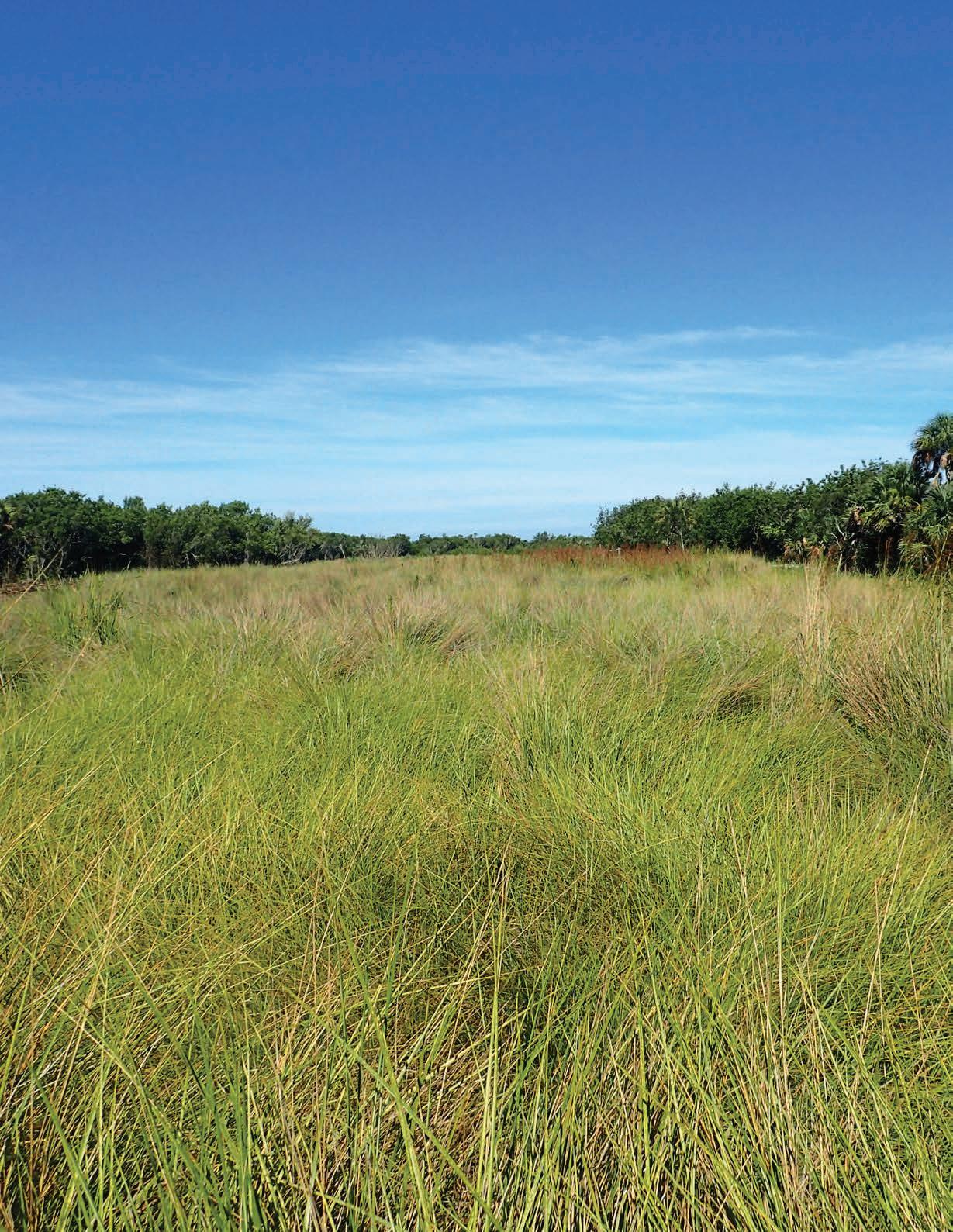
The Roots of Planting Native — 16
Spring 2024
A
—
RETURN TO Spartina Marsh
2
Connecting You to Nature is published by SCCF, a nonprofit 501 (c)(3) founded in 1967 on Sanibel Island, Florida. Through stories about how we fulfill our mission to protect and care for Southwest Florida’s coastal ecosystems, we hope to deepen your understanding of how our land, water, and wildlife depend on our stewardship.
James Evans, CEO
Barbara Linstrom, Editor Doug Cook, Design
CONTRIBUTING WRITERS
Kaitlin Alzapiedi, Denise Blough, Matt DePaolis, Jenny Evans, Cheryl Giattini
Chris Lechowicz, Kealy McNeal, Eric Milbrandt, Ph.D., Shannon Rivard, Kelly Sloan
CONTRIBUTING PHOTOGRAPHERS
Shane Antalick, David Meardon
OPEN TO THE PUBLIC
Native Landscapes & Garden Center at Bailey Homestead Preserve 1300 Periwinkle Way (239) 472-1932
Sanibel Sea School info@sanibelseaschool.org (239) 472-8585
Main Office (239) 472-2329
SCCF Sea Turtle Hotline (978) 728-3663
Shorebird Inquiries shorebirds@sccf.org
www.sccf.org | info@sccf.org P.O. Box 839, Sanibel, FL 33957
Calling All SCCF Family Members – Please Get Us through the Homestretch
This is the time when the June 30 end of our fiscal year begins to loom large. As has been the case for 57 years, we are committed to balancing our operating budget before we reach that finish line. We can’t do that without your help. Now is the time to reinvest in SCCF’s mission to protect and care for Southwest Florida’s coastal ecosystems.
The stories that follow both harken back to our cherished history and share details of our future conservation path. At SCCF, our staff members and volunteer leadership are engaged daily in honoring our past while focusing squarely on our current challenges and accomplishments. That important work can’t be sustained without the generosity of our friends, partners, and donors.
This issue of our semi-annual magazine is well worth reading. Once you do, we hope you will be inspired to use the enclosed envelope to make your tax-deductible gift to support SCCF’s mission-driven work.
Please call Development Director Cheryl Giattini at 239-822-6121 with any questions you may have about SCCF’s path forward and how you can help. Thank you in advance for your consideration of this sincere request.
Thank you!
Please become a member or renew your membership by using the enclosed envelope or donating at www.sccf.org
HOWYOU CANHELP
Spring 2024
Printed on FSC Certified Paper Forest Stewardship Council (FSC) certification imposes stringent standards for forest management that benefits people, wildlife, and the environment.
Dear Members and Friends of the SCCF Family,
Welcome to the spring edition of Connecting You to Nature!
As we approach the 50-year anniversary of Sanibel’s incorporation, it’s important for us to reflect on what makes Sanibel and Captiva so special. It’s not just the white sandy beaches and richness of our natural resources; it’s the community that cares so deeply about our islands and is willing to fight to preserve our unique resources and way of life.
Our founders recognized that this would not be easy and reminded us that “we must remain vigilant.” Keeping with that sentiment, we never miss an opportunity to shine light on what makes our islands so special and why they are worth protecting.
The destruction brought by Hurricane Ian demonstrated the power of Mother Nature. It also taught us about the resilience of our natural systems and the processes that have shaped our landscapes.
 James Evans, CEO
James Evans, CEO
There is a reason why our historic landscapes were dominated by salt-tolerant vegetation like spartina marshes, cabbage palms, and mangrove forests. They have adapted to the harsh conditions on our barrier islands that select for the true survivors. Our community reflects the fortitude of our natural systems, and we too are coming back stronger and will flourish into the future.
Hurricane Ian presented us with many challenges, but with those challenges has come opportunity — the opportunity to strengthen our reliance on our natural systems, rebuilding in a way that is more resilient, incorporating lessons learned over the past five decades, and reinforcing our commitment to conservation.
In this edition of Connecting You to Nature, you will read about the amazing work that our dedicated staff and volunteers are doing to restore and protect our coastal and aquatic ecosystems. You will be immersed in the innovative research and monitoring that our scientists are conducting on sea turtles, shorebirds, terrestrial wildlife, our marine and estuarine environments, water quality, and harmful algal blooms — and how our science is being used to advocate for policies necessary to preserve these unique resources. And, how our passionate educators are improving the ocean’s future one person at a time through our distinctive education programs at the Sanibel Sea School.
As part of the SCCF Family, please read about the amazing work of our hard-working and devoted staff and volunteers knowing that we couldn’t do it without your generous and caring support.
As we approach the end of our fiscal year on June 30, we hope that we can count on your continued support to help us meet our Annual Fund Drive goal.
With Sincere Gratitude,
James Evans Chief Executive Officer
SPRING - 2024 | 1
A RETURN TO Spartina Marsh


With more than 1,800 acres of preserve lands on Sanibel, SCCF has seen a silver lining from the impacts of Hurricane Ian and its intense storm surge.
As dead vegetation is removed from SCCF properties, the landscape has taken on a different look while the ecosystems heal from the aftermath. Before the hurricane, many properties were lush with shrubby, dense vegetation including large stands of hardwood trees.
“Even though it may have looked natural or healthy to many people, we considered it overgrown and not in a natural state for how most of Sanibel existed prior to 1960 when it was primarily a grassland”
Chris Lechowicz Wildlife & Habitat Management Director
Now, preserve lands are opening up and wetlands are apparent where they once historically existed. With the help of replanting of native flora, these newly opened areas will benefit native wildlife species that were historically abundant.
“What we’ll eventually see is a return to spartina marsh, which was the predominant type of wetland historically found on Sanibel,” said Lechowicz.
With the help of the Native Landscapes & Garden Center as well as volunteers from Coastal Watch, thousands of plantings will take place this spring and summer at the expansive Gulf Ridge Preserve, off Sanibel-Captiva Road.
Plantings will be mostly sand cordgrass (Spartina bakeri), as well as sawgrass (Cladium jamaicense), and giant leather fern (Acrostichum danaeifolium). A total of about 40,000 plants are needed for the immense and vital restoration effort.
Expansive grasslands will replace densely vegetated areas that were killed off due their inability to
AN ENDURING LEGACY OF LAND ACQUISITION
The history of SCCF is all about the dedication and vision of islanders who sought to preserve diverse island habitats and protect wildlife.
As a true grassroots effort, the Sanibel-Captiva Conservation Foundation incorporated as a non-profit organization in 1967 with the goal of offsetting the pressures of development through its own land preservation, ecological studies, and education.
withstand saltwater intrusion into their root systems for extended lengths of time.
State contractors provided a tremendous amount of cleanup effort with their large crews until their funding ran out. Since then, an SCCF contractor, as well as Wildlife & Habitat Management staff, and volunteers have been continuing this work, but there is still much to be done.
The most obvious vegetation loss, post-hurricane, was of hardwood trees, such as buttonwood (Conocarpus erectus), especially west of Tarpon Bay Road. This native, but extremely aggressive tree is the main invader responsible for open canopy wetland loss on the island due to more available ground water throughout the year and infrequent fire occurrence.

At its inception, SCCF prioritized land acquisition, especially wetlands of the Sanibel’s interior slough system, to prevent the forever loss of that habitat.
The first donation of land came in 1968 when Admiral and Mrs. E.G. Konrad gifted SCCF more than 12 acres in Chateau-sur-Mer — a vital part of the interior wetlands located near the Sanibel slough's headwaters.
Visit sccf.org/preserves to learn about the seven preserves that are open to the public and offer hiking trails.
That gift established an incredible legacy that continues to this day and has made SCCF the largest private landowner on Sanibel, with increasing holdings on neighboring islands, as well as critical mangrove habitat in South Fort Myers and Cape Coral. From iconic interior wetlands to upland hammocks, most preserve lands are closed to the public to protect ecologically sensitive features and wildlife.
NEW LAND ACQUISITIONS >> SPRING - 2024 | 3
New Beachfront & North Cap Preserve Lands
SCCF’s most recent land acquisitions include a significant donation of beachfront property on Sanibel as well as a new donation of property on North Captiva Island.

New North Captiva Land: In 2023, SCCF received the donation of a stilt home and one and a half acres of land in the residential area of North Captiva near state park lands. It features a combination of coastal scrub and beach dune habitats, providing habitat for gopher tortoises, eastern indigo snakes, and nesting sea turtles. The beachfront property has a house that SCCF plans to convert to a field station for island research and education.
Puschel Preserve Transformation Underway
SCCF continues to make major progress with restoration at the Puschel Preserve, which was acquired in 2021 through a $2 million public campaign, with a generous lead donation from Roberta and Philip Puschel. It features more than 12 acres of critical wildlife habitat running from Periwinkle Way to the Sanibel River.
Most of the property will remain closed to the public as wildlife habitat, while the front five acres along Periwinkle Way, which served as a staging area for Hurricane Ian debris, are being transformed to welcome and educate visitors in a serene native setting.
The public area will feature the Birmingham Family Trail—a loop trail connected to Sanibel’s shared-use path, a welcome plaza with a bike rack and water bottle refill station, the Lee A. Tauck Sculpture Garden, and the Stanback Wildlife Viewing Platform by a demonstration marsh.
In October 2023, Coastal Watch volunteers teamed up with the Native Landscapes & Garden Center to plant the Parish Pollinator Garden with native wildflowers, including nectar plants and larval host plants.
Their focus has now turned to the demonstration marsh, which will highlight the importance of water quality within Sanibel’s freshwater wetlands. More than a thousand native wetland grasses, ferns, and a diversity of littoral plants are being planted in the marsh area and along an existing pond’s edge.
Visit sccf.org/volunteer for future restoration opportunities.
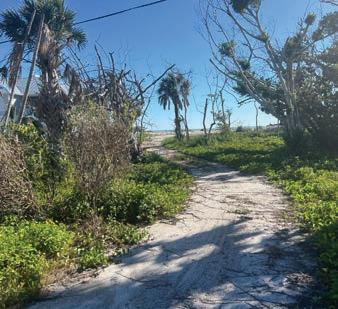
Bassett McGrath Preserve: Near beach access #7 on Sanibel, SCCF recently received a donation of nearly one acre of land, which is a combination of coastal scrub and beach dune habitats. The gift from Lynn Bassett McGrath follows several generations of her family enjoying their Sanibel gulf-front home. The land features native vegetation near West Gulf Drive and a cleared area further toward the beach where the home stood.
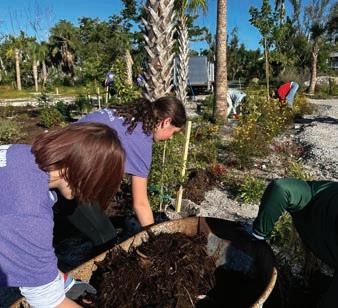
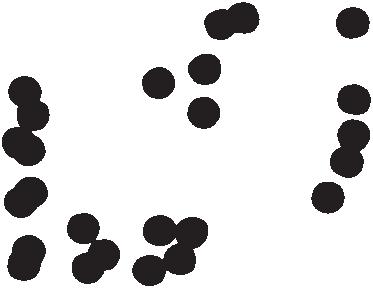
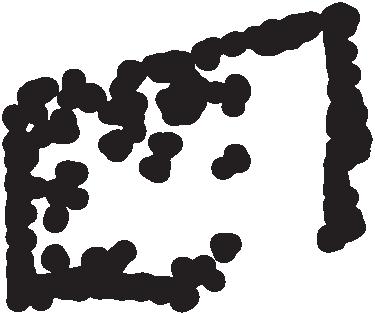
4 | SCCF — SANIBEL-CAPTIVA CONSERVATION FOUNDATION
PURDY
DR. PERIWINKLEWAY
POLLINATOR GARDEN
PLATFORM
WATER STATION SCULPTURE GARDEN VIEWING
WETLAND MARSH TRAIL
SCCF — SANIBEL-CAPTIVA CONSERVATION FOUNDATION
PUSCHEL PRESERVE
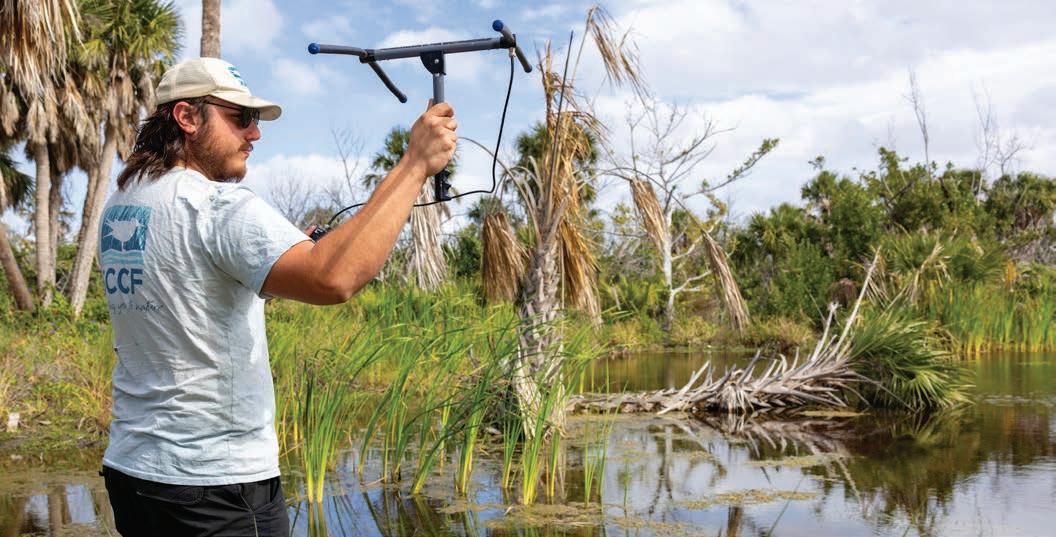
Protecting Wildlife
Non-Marine Turtle & Rare Species Research
SCCF Wildlife Biologists continue to conduct research, document the effects of Hurricane Ian’s storm surge and be leaders in the conservation of non-marine turtles and other wildlife. The life history biology and habitat requirements of understudied and rare species on islands such as the Sanibel Island rice rat (Oryzomys palustris sanibeli), eastern indigo snake (Drymarchon couperi), Florida chicken turtle (Deirochelys reticularia chrysea), and Florida mud turtle (Kinosternon steindachneri) are essential to sustaining populations in the future.
Bat Research Identifies 3 New Species
SCCF’s Wildlife & Habitat Management Program recently partnered with the Miami Bat Lab, made up of Zoo Miami and Bat Conservation International, to launch a study on the bats of Sanibel Island. Previously, research could only document three bat species on the island (Brazilian free-tailed bat (Tadarida brasiliensis), northern yellow bat (Lasiurus intermedius), and big brown bat (Eptesicus fuscus) With the use of Song Meter Mini-bat Ultrasonic Recorder Boxes and Sonobat software, SCCF has been able to document the Seminole bat (Lasiurus seminolus), evening bat (Nycticeius humeralis), and tri-colored bat (Perimyotis subflavus) as present on the island.





SPRING - 2024 | 5
Restoring Nature's Guardians
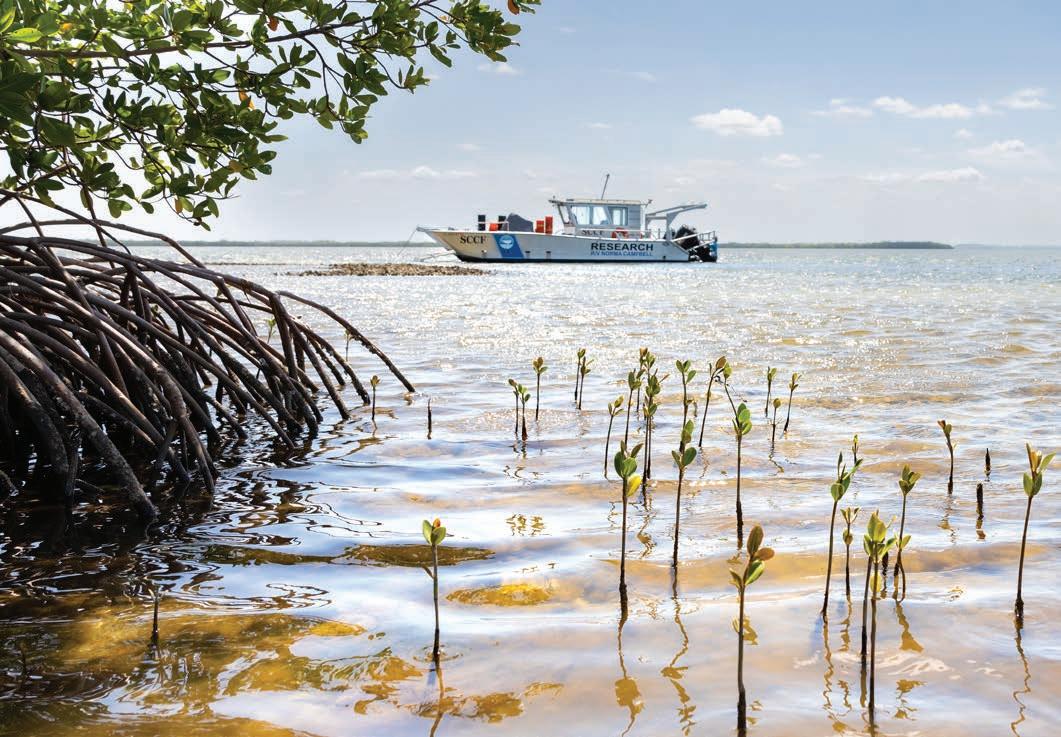
Mangrove and Oyster Reef Habitat Restoration
In the delicate balance of coastal ecosystems, mangroves and oyster reefs stand as guardians, providing vital habitat and protection to countless species. However, these crucial habitats face mounting threats from human activities and environmental degradation. Recognizing the urgency of conservation efforts, SCCF’s Coastal Watch, in partnership with the Marine Lab, has embarked on ambitious initiatives to study, protect, and restore mangrove and oyster populations.
Adopt-A-Mangrove
Mangroves play a multifaceted role in preserving the health of coastal environments. Serving as nurseries for juvenile fish, nesting grounds for wading birds, and buffers against storm damage, these trees are indispensable to Southwest Florida's ecosystems.

That’s why Coastal Watch launched the Adopt-A-Mangrove program, inviting residents to become stewards of these vital habitats. Participants receive starter kits to grow mangroves at home, nurturing them until they’re ready to plant at local restoration sites. In 2023, a total of 787 baby mangroves were adopted into 88 loving homes across Southwest
Florida, with numbers continuing to grow in 2024.
"Our goal for our participants and community is to instill a deeper understanding and appreciation of mangroves in Southwest Florida," said Coastal Watch Director Kealy McNeal. "By engaging residents in the nurturing and planting process, we hope to cultivate a sense of ownership and responsibility towards our coastal ecosystems."

COASTAL WATCH
6 | SCCF — SANIBEL-CAPTIVA CONSERVATION FOUNDATION

Oyster Recycling Program
Like mangroves, oyster reefs play a critical role in supporting marine biodiversity and improving water quality. However, these valuable habitats have faced significant declines globally due to various stressors. SCCF's Coastal Watch and Marine Lab are running an oyster recycling program to bolster reef restoration efforts.
The oyster recycling program aims to repurpose discarded oyster shells from local restaurants, reintroducing them into the marine environment to build new reefs. By leveraging community partnerships and engaging volunteers, Coastal Watch seeks to create a sustainable cycle that replenishes oyster populations while mitigating the impact of waste on coastal ecosystems.
Voluntourism
COASTAL WATCH'S BEACH CLEANING INITIATIVES:
Small Efforts Leading to Big Differences

The allure of sandy beaches calls locals and tourists to Sanibel’s shores. With them, however, comes the threat of litter and debris that tarnish the environment and pose grave dangers to local wildlife. That’s why Coastal Watch implemented beach bucket stations in 2022 and continues to hold island-wide beach cleanups.
“One of the primary focuses is to ensure the wellbeing of local wildlife, particularly during the critical summer turtle and shorebird nesting season,” McNeal
Coastal Watch is harnessing the power of voluntourism to mobilize visitors and tourist groups in conservation efforts. Through upcoming volunteer opportunities, visitors and local groups and organizations can actively participate in mangrove plantings, oyster reef restoration, and beach cleanups. These immersive experiences not only contribute to habitat restoration but also foster a deeper connection with Sanibel's natural beauty.
To learn about upcoming volunteer opportunities and how you can contribute to coastal conservation, visit sccf.org/volunteer.
said. “Sanibel serves as a crucial nesting ground for sea turtles. The presence of litter and debris can obstruct nesting sites and endanger hatchlings as they make their way to the ocean. Small pieces can be harmful to nesting shorebirds by entanglement and ingestion.”
Beach bucket stations at popular public beach access points encourage beachgoers to participate in cleaning efforts while enjoying the seaside. Look for additional beach bucket stations coming soon!

SPRING - 2024 | 7
Harmful Algal Blooms and Water Quality Research

The goal of the SCCF Marine Lab’s water quality research is to improve the detection of harmful algal blooms and to determine what causes the microscopic algae to grow out of control. There are key ingredients that fuel algae blooms, including warm temperatures, excess nutrients, and water source.
The data that are collected are analyzed by the lab’s scientists first, then they are provided to teams of data modeling scientists.
The outcomes are to develop tools and use existing technology to provide improved guidance to water managers that optimize good and minimize poor water quality conditions.
“Our estuary and the large watershed of the Caloosahatchee is complicated enough, but then we also have water flows from Lake Okeechobee,” said Marine Lab Director Eric Milbrandt, Ph.D. “This complicated system is highly managed and highly dynamic.”
The high frequency data from the lab’s River Estuary and Coastal Observing Network (RECON) plus the highly detailed data that are obtained from water sampling, including nutrients, phytoplankton
species, and toxins are key to determine water quality conditions.
“The models help us predict conditions based on current and recent conditions and require these data to run the simulations and predictions,” said Milbrandt. “For example, the water managers don’t want another harmful algal bloom from Lake Okeechobee to be the cause of an algal bloom near Fort Myers.”
The lab is working with an incredible team of researchers
from the University of Florida and the University of South Florida on this collaborative project that started in 2018.
“We continue to develop tools for water managers when there is some operational flexibility,” he added. “These tools include evaluating probabilities for algal bloom formation, determining what species of phytoplankton will bloom, whether toxic or non-toxic, and where the blooms will be transported once they are in the estuary.”
The research is also used to produce weekly condition reports that are shared with water managers and the general public.
Recently, the lab has focused attention on the tidal tributaries of the Caloosahatchee. These tributaries contribute some freshwater during and after rain events and may be important incubators for blooms that are
8 | SCCF — SANIBEL-CAPTIVA CONSERVATION FOUNDATION
MARINE
LAB

then transported to the main Caloosahatchee. Sampling is focused on tidal tributaries around the Cape Coral Bridge and upstream to the US 41 bridges.
Returning Functionality to RECON
When RECON was introduced in 2007, the SCCF Marine Lab decided not to retrieve the instruments due to incoming tropical storms or hurricanes.
“That decision has led to a number of instances where wind speeds, water levels and wave heights were measured during catastrophic conditions,” said Milbrandt. “We’ve learned a lot about the cold fronts, hurricanes, and other events because the sensors are measuring 24 hours per day seven days a week.”
Understandably, Hurricane Ian damaged pilings and some equipment. Pilings were sunk by
“Our priority is to return the functionality of RECON by replacing lost sensors and weather stations by the end of 2024”
Eric Milbrandt, Ph.D. SCCF Marine Lab Director
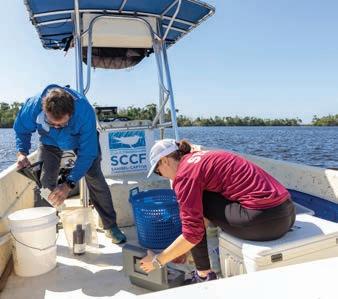
collisions with runaway boats, waves crashed over electronics that were placed on top of pilings, and weather sensors were flooded.
“Our priority is to return the functionality of RECON by replacing lost sensors and weather stations by the end of 2024,” he said. “This is being conducted in addition to the routine monthly maintenance trip and occasional interruptions in data that require troubleshooting.”
Research on the Causes of Declining Seagrass
Seagrass is one of the most abundant and important marine habitat types around the barrier islands. These submerged plants evolved under conditions of high light, which requires clear water to grow. Seagrass habitat is a hotspot for species diversity, especially the juvenile life stages of many fish species. Arthropods,

mollusks, echinoderms, and polychaetes use the shelter of seagrass to forage.
Large declines in seagrass have occurred in San Carlos Bay and Matlacha Pass over the last 10 years. Matlacha Pass lost 50 percent of its seagrass between 2014 and 2021. At the same time, there has been an overgrowth of mat forming algae.
“We are investigating the relationships between water quality, macroalgae overgrowth and seagrass losses,” said Milbrandt. “The goal is to determine a restoration plan to improve water quality or address the macroalgae overgrowth.”
The lab also continues to keep a close eye on seagrasses around Sanibel, especially in the waters within J.N. “Ding” Darling National Wildlife Refuge.
SPRING - 2024 | 9
Expanding Boundaries and Scope to Better Protect Sea Turtles, Shorebirds

For beach-nesting wildlife, each season brings new successes and new challenges. In 2023, SCCF documented the highest loggerhead nest count ever recorded on Sanibel and Captiva, and the highest fledging rate since 2013 in snowy plovers. Unfortunately, the number of hatchlings emerging from loggerhead nests was the lowest documented since 2016 — and just three pairs of snowy plovers laid three nests on Sanibel’s beaches.
To better understand how various threats are impacting population recovery, our coastal wildlife team is expanding its boundaries and scope.
While the bulk of SCCF’s sea turtle and shorebird work occurs on Sanibel and Captiva Islands, the shorebird team continues to expand its range to include other sites within Lee County.
“In order to better understand how our migratory and resident shorebirds are using the habitat and moving between sites, we need to look at things from a more regional perspective,” said SCCF Shorebird Biologist Audrey Albrecht. “We’re working toward
expanding these efforts to include more routine year-round monitoring.”
Since 2016, SCCF’s shorebird team has coordinated with partners from the Florida Shorebird Alliance to cover more areas in the region, including Bunche Beach and North Captiva. Increased coverage will provide more comprehensive monitoring data about nesting pairs, fledging rates, and habitat use that will improve understanding of regional population trends.
Similarly, the sea turtle team is preparing to learn more about the variables impacting the number
of hatchlings produced on our beaches.
“We want to explore possible reasons for low hatch success through research projects, which include analyzing elevation, temperature, groundwater levels, and moisture at nest sites,” said Coastal Wildlife Director and Sea Turtle Program Coordinator Kelly Sloan.
Coupled with sea level rise, record heat, and ongoing beach renourishment projects, understanding how these variables work together to impact productivity becomes increasingly important, Sloan said. Predation is another factor affecting offspring survival for beach nesting wildlife, and SCCF is working with partners to explore methods of coyote control in hopes of reducing nest depredation.
COASTAL WILDLIFE 10 | SCCF — SANIBEL-CAPTIVA CONSERVATION FOUNDATION

Red Tide Impacts
SCCF’s data also recently revealed that brevetoxin concentrations in hatchlings impacts hatch success. Another project on the horizon will examine the impacts of these red tide toxins on hatchling fitness and survival.
As red tides become more frequent and intense, it’s important to consider how these blooms affect wildlife health and survival. Near-term SCCF projects investigating this threat include banding rehabilitated royal terns that were clinically treated for symptoms of brevetoxicosis (red tide poisoning), satellite tagging juvenile sea turtles to observe how they respond to water quality conditions, and conducting necropsies to characterize sea turtle diets in Southwest Florida and identify shifts surrounding red tide events. These projects are all pending permit approval.
“Necropsies can fill in data gaps about loggerhead diets in our area, as well as provide us with valuable information about how sea turtles’ diets may change surrounding red tide events,” said Sea Turtle Biologist Jack Brzoza. “Additionally, a turtle with high concentrations of red tide toxins may suffer from symptoms of brevetoxicosis and have reduced foraging ability.”
The research would also fill in gaps related to age.
“So much of our sea turtle knowledge is focused on nesting females, because those are the
SCCF is the Florida Fish & Wildlife Conservation Commission permit holder for monitoring nesting sea turtles on Sanibel and Captiva. With the help of more than 80 volunteers, we protect hundreds of nests per year.

most accessible individuals, so these projects would give us really valuable data about our region’s younger turtles,” Sloan said. “Understanding these earlier life history phases are important because survival during this time can have a strong influence on population stability.”
As a whole, the Coastal Wildlife department’s sights are centered on making a bigger difference — for sea turtles and shorebirds — and for the number of people it educates about protecting these unique species through wildlifefriendly beach behavior.

SPRING - 2024 | 11
A Week in the Field
Inspiring Tomorrow's Scientists

As we gear up for another exciting summer, Sanibel Sea School is thrilled to shine a spotlight on one of our most anticipated programs: A Week in the Field. This transformative camp promises to ignite a passion for marine conservation in high school students and truly merges the work of Sanibel Sea School and SCCF.
“A Week in the Field aims to connect teens with the work of SCCF in a hands-on and exciting way,” Rivard said. “Through immersive experiences in marine science and conservation, participants will not only deepen their understanding of coastal ecosystems but also cultivate a sense of wonder and appreciation for the natural world.”
Campers will have the chance to work alongside SCCF scientists.
Whether it's surveying shorebirds, measuring oysters, or analyzing water samples, each activity is designed to deepen their ocean connection while honing their scientific skills.
For the first time, we’re able to offer this week for FREE, thanks to our generous sponsors: The League of Environmental Educators in Florida and Southwest Florida Association of Environmental Professionals.
“By providing this enriching experience, we hope to spark or fuel passions for STEM careers among our campers, empowering the next generation of environmental leaders.”
Shannon Rivard, Youth Education Director
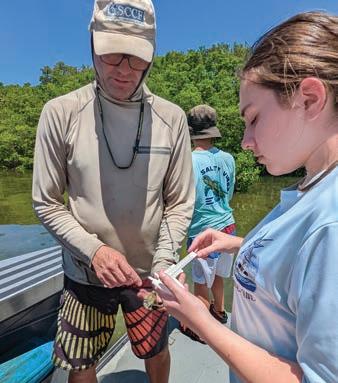
“Our ultimate goal is to secure funding for A Week in the Field for years to come, with ambitions to expand the program to two weeks,” Rivard said. “By providing this enriching experience, we hope to spark or fuel passions for STEM careers among our campers, empowering the next generation of environmental leaders.”
SANIBEL SEA SCHOOL
12 | SCCF — SANIBEL-CAPTIVA CONSERVATION FOUNDATION
A Chance to Sea

Empowering Communities Through A Chance to Sea: Reaching Them with a New SEA Lab
In the aftermath of the devastation of Hurricane Ian, the loss of the mobile SEA Lab was not just a setback for Sanibel Sea School, but a blow to the communities we serve.
“A Chance to Sea has always been a cornerstone of our efforts to empower communities through handson learning. With the SEA Lab, our vision was to bring marine science education directly to underserved areas of Southwest Florida, reaching families who may not otherwise have access to such enriching experiences,” Rivard said. “Now, we are more determined than ever to realize this vision.”
While the original SEA Lab trailer may be gone, its spirit
lives on as we set our sights on outfitting a cargo van to serve as our new mobile learning laboratory. Our commitment goes beyond just rebuilding. We are seizing this opportunity to enhance and expand, ensuring that every child in Southwest Florida has A Chance to Sea the beauty and importance of our oceans. Together, we can inspire the next generation of ocean stewards, empowering them to protect and preserve our natural resources for years to come.
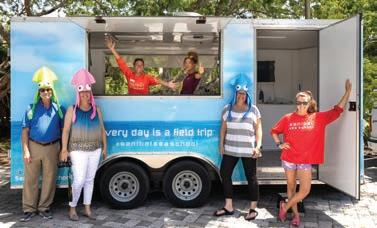


SPRING - 2024 | 13
Forging Critical Connections to Amplify Advocacy
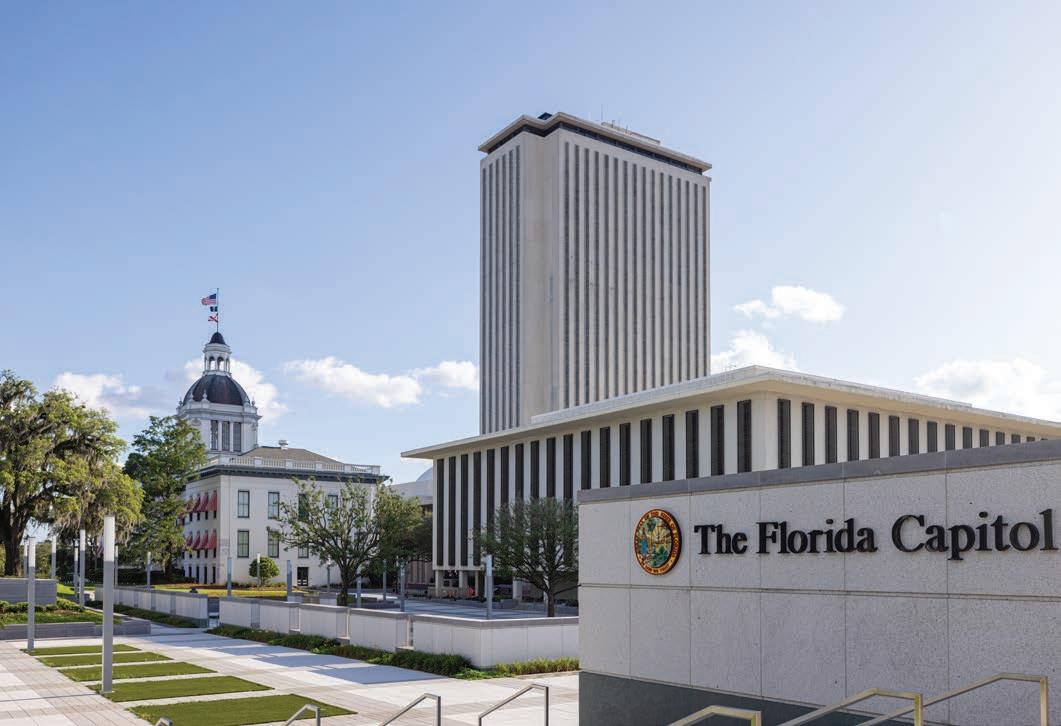
From quantifying the connection between the health of Southwest Florida’s water quality and its economy, to engaging with stakeholders far beyond our backyard, the SCCF environmental policy team is becoming a louder, stronger voice to protect and care for the region’s ecosystems.
Water Quality & Our Economy
A powerful report released in January by SCCF, Captains for Clean Water, and the Conservancy of Southwest Florida showed just how costly another massive harmful algal bloom (HAB) could be for Southwest Florida’s economy. The report, conducted by Greene Economics, concluded that another HAB like the ones in 2005-06 and 2018 could cost Lee, Collier, and Charlotte Counties:
$5.2 billion in local economic output
$17.8 billion in property values
$8.1 billion in the value of outdoor recreation
$60.3 million in lost property tax revenue
43,094 jobs

Visiting Decision Makers
The policy team is also expanding its efforts to travel to our state and national capitols, key Everglades restoration sites, and wherever else there is an opportunity to advocate for clean water.

“This collaborative report illustrates the impact our small, agile team can have when we’re able to involve ourselves in components of these environmental issues that have previously been beyond our organizational bounds,” said Environmental Policy Director Matt DePaolis. “We’ve seen a lot of excitement around this study, and it is already being used to advocate for our coastal waters everywhere from the local water districts to the halls of Congress in D.C.”
“By travelling to where decisions are being made, we can ensure our advocacy is seen and heard among the individuals and groups with the power to pull the strings,” said DePaolis. New Policy & Advocacy Associate Allie Pecenka recently went to Tallahassee for Everglades Action Day, an annual event for Everglades advocates to mobilize in the state capitol and garner support for Everglades restoration. DePaolis has ventured to Washington, D.C. multiple times in the past two years to stress the importance of funding for Everglades restoration, bringing a critical Gulf coast perspective to statewide and federal discussions.
ENVIRONMENTAL POLICY
14 | SCCF — SANIBEL-CAPTIVA CONSERVATION FOUNDATION

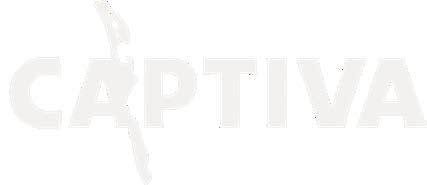

Protecting Captiva
“We’re also focusing on local challenges near, dear, and real to us, such as Lee County’s approval of increased density and building heights at South Seas Island Resort on Captiva Island,” he said.
To fight the county’s decisions — which will jeopardize coastal resilience, water quality, and hurricane evacuation routes — SCCF is actively involved in the Protect Captiva Coalition. Supported by over 13,000 individuals and organizations, the coalition has taken legal action to oppose these changes and is advocating to preserve our unique barrier islands for future generations.
“Although an unfortunate issue, the efforts we’ve made with the Protect Captiva Coalition demonstrate the power our small organization can have when we work strategically to utilize our partnerships and resources,” DePaolis said.
“We look forward to exploring new advocacy methods to educate and engage the countless number of people who care about protecting southwest Florida’s coastal ecosystems.”
Matt DePaolis Environmental Policy Director
SPRING - 2024 | 15

The Roots of Planting Native
With planting native trending on the islands in the post-Ian era, it’s a good time to revisit why and how native plants became such an integral part of our sanctuary islands. It’s a history that is intertwined with what makes our islands so special.
More than 50 years ago — before Sanibel became a city — SCCF hired a director named Dick Workman who first proposed a native plant bank. Using native plants salvaged from developer-impacted lands, SCCF embarked upon a legendary program to teach islanders the value of using natives in landscaping.
It was 1973 and Lee County was allowing a frenzy of development that threatened to destroy the islands’ environmental integrity. Concerned islanders banded together to take control of the island’s destiny by incorporating Sanibel in 1974.
A leading force for planting native
With SCCF providing a key role in funding and facilitating scientific research, Sanibel then became the first city to base its land development code on the preservation of natural resources. The landmark Sanibel Plan that was adopted included specific

requirements for landscaping to incorporate native plants.

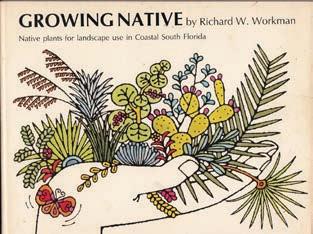
The supply of native plants was lacking, so SCCF organized seed collection and propagation. By 1979, that effort spawned a native plant nursery staffed by a fulltime person. With the help of about 25 volunteers, the nursery took root and bloomed. It researched ten major species with experiments in seed treatments, fertilizer response and the timing of seed collection. The acquired knowledge prompted several state parks to set up their own nurseries and led to the formation of the Native Plant Society for Florida.



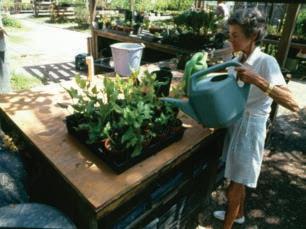
16 | SCCF — SANIBEL-CAPTIVA CONSERVATION FOUNDATION


Helping islanders with the 75% rule



ith the City of Sanibel requiring that at least 75 percent of all vegetation — trees, shrubs, and groundcovers — on a property be native plants, SCCF’s Native Landscapes & Garden Center continues to play a vital role in making that possible.
“In the wake of Hurricane Ian, many people are restoring their yards and looking for solutions that are sustainable and in-line with the sanctuary island ethic,” said SCCF Adult Education Director Jenny Evans. “With native plants proving their resilience to the storm surge, we are also now sensing an urgency to adopt what we’ve been teaching for decades.”
Well beyond the original ten native species in SCCF’s initial nursery, the Garden Center now offers more than 150 native plants over the course of a season.
“Despite the destruction of Hurricane Ian, many people have discovered a newfound interest in native plants, due to their adaptations to our local environments and ways that they support our local wildlife and ecosystems as a whole,” said Evans.
Back to basics
The knowledgeable 6-person team, plus about a dozen volunteers, at the Garden Center focuses on educating people about how to use native plants and helping to find appropriate species for their situation.
“In response to the tremendous demand, we’re offering a ‘Back to Basics’ series of gardening classes to encourage residents along the way,” she added.
In keeping with the spirit of the SCCF’s original native plant nursery, the Garden Center is also developing a new propagation facility. It will grow rare or horticulturally unavailable species, making more native plants available than ever on the islands.
“Hurricane Ian set back efforts significantly, as the brand new shade house was destroyed, but reconstruction plans are underway,
“Despite the destruction of Hurricane Ian, many people have discovered a newfound interest in native plants, due to their adaptations to our local environments and ways that they support our local wildlife and ecosystems as a whole”
Jenny Evans Adult Education Director
and we’re looking forward to begin growing hard-to-find plants again soon,” said Evans.
To support planting native by donating to the new Propagation Facility and its shade house, please contact SCCF Development Director Cheryl Giattini at cgiattini@sccf.org or 239-822-6121.
SPRING - 2024 | 17
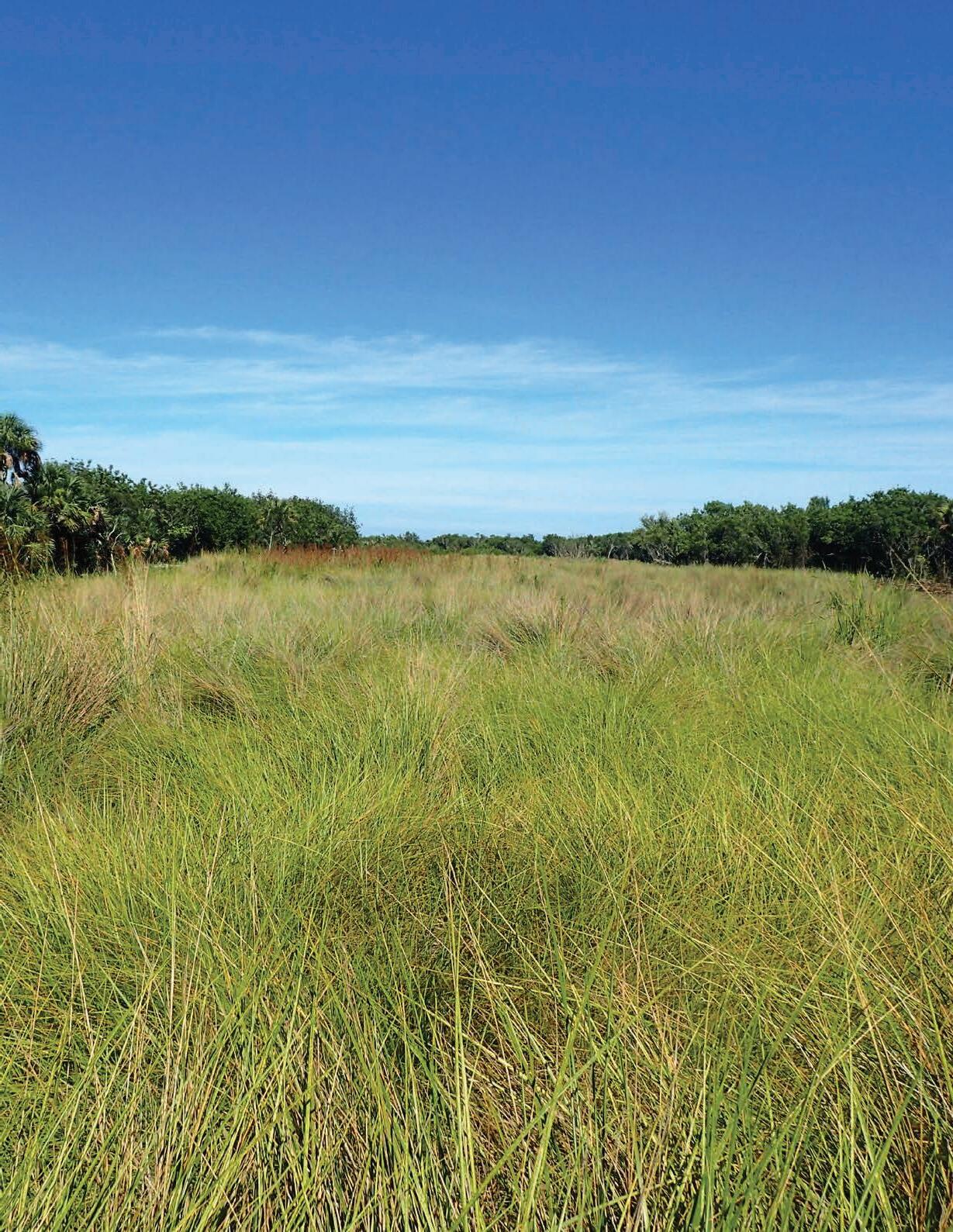



P.O. Box 839 Sanibel, FL 33957 PRESORTED FIRST-CLASS MAIL U.S. POSTAGE PAID NAPLES, FL PERMIT NO. 293


 James Evans, CEO
James Evans, CEO






















































